NEW: SLF Data Mapping Platform just released https://bit.ly/32ltvSX
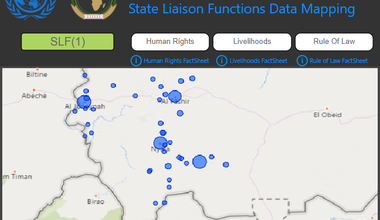
In 2018, the Security Council by resolution 2429 (2018) directed UNAMID to draw-down its operations in Darfur. Consequently, the Mission’s troop ceiling was reduced by 54 percent and its footprint reduced to the Greater Jebel Marra, where armed conflict still existed.
The Council also directed UNAMID to work jointly with the United Nations Country Team (UNCT) in Sudan to support a whole-of-system transition concept, known as the State Liaison Functions (SLFs) with the aim of providing sustainable solutions to the critical drivers of conflict as part of efforts to prevent a relapse into conflict.
A Joint Update on the implementation of the Secretary-General’s Planning Directive summarizes progress up to May 2020.
How is the overall UNAMID transition managed?
The UNAMID transition is along three pillars:
- Political through the Juba Peace agreement
- Security with focus on physical protection, and
- Programmatic - through the SLFs.
Together with the UNCT in Sudan, UNAMID adopted a pragmatic approach in the form of a joint transition action plan (JTAP)[3].
As a management tool, the JTAP outlined the body of work to carry out, responsible offices/sections as well as work to be carried forward post-UNAMID’s departure from Darfur.
A Joint Transition Cell (JTC) was established to support UNAMID and the UNCT to provide oversight on the broad transition guided by the JTAP. The JTC brings together UNAMID and the UNCT to ensure implementation of planned interventions under each workstream, including reporting on progress.
The SLFs as an innovative transition tool
UNAMID’s programmatic transition, implemented through the SLFs, is based on a new concept mandated by the Security Council in 2018. This mandate is being implemented through:
- Programmatic peacebuilding activities led by 10 UNCT partners in all five Darfur States;
- Provision of financing through the assessed peacekeeping budget; and
- 10 United Nations Agencies, Funds and Programmes supporting implementation of the SLFs.
- Guided implementation through 99 UNAMID staff co-located with multiple UN Agencies, Funds and Programmes.
The UN in Sudan piloted this mechanism translating this concept into concrete action. The SLFs aim to contribute to the prevention of the relapse of conflict in Darfur over the long-term.
A series of Factsheets showcase the early framework and results achieved by the SLFs along the four priory areas:
- Rule of Law: police, justice, corrections. See here for the results Rule of Law Phase 1 Factsheet.
- Resilience and Livelihoods/Durable Solutions: for displaced populations and host communities. SLF Phase 1 Durable Solutions Factsheet is available here.
- Immediate Service Delivery: direct support to internally displaced persons. Under Phase 1, immediate service delivery achievements are synthesized together with the Human Rights pillar.
- Human Rights: with focus on ensuring adequate human rights presence and programming in Darfur. Phase 1 achievements are summarized here.
SLF projects were designed to address root causes of conflict in areas where the UNCT and UNAMID have the comparative advantage to work together.
Joint work is directed on potential conflict triggers of land, resources (such as water) and the return of displaced people and refugees.
What have the SLFs achieved?
Under implementation since January 2019, the SLFs have supported national ownership, UN system-wide coordination, and showcased adaptive management in practice.
In the first year alone:
- East Darfur saw increased peace building programming and presence of the UNCT with two additional agencies during rule of law and human rights work and establishing offices in the state and others expanding activities.
- With over 300 trainings or workshops, over 10,000 returnees were supported in host communities and over 60,000 Darfuris (women, men and youth) trained across a range of rule of law, human rights, and violence prevention issues.
- 29 courts, and 15 police stations and community policing centres, have been constructed or refurbished in areas of potential conflict, in Darfur.
- Through SLFs, we trained 655 paralegals; 612 SPF police officers; 458 Family and Child Protection Unit professionals; 225 child judges and prosecutors; 137 prosecutors; and 90 district court judges: each strengthening and enhancing access to justice and legal aid systems for vulnerable groups.
- Over 200 civil society members including women lawyers were trained in trial monitoring with focus on SGBV; and 384 prison officers trained on Human Rights approaches to prison management in all 4 Darfur States.
How is the UNAMID transition being monitored?
To guide and track SLF implementation, the UN State Liaison Functions Data Mapping Tool provides a data dashboard and visualization tool on SLF impact.
By supporting evidence-based decision-making and data-driven planning, the Mapping strengthens understanding of how SLF programming serves multiple geographical communities in Darfur and highlights the full range of implemented activities.
It also tracks emerging hotspots, interlinkages, conflict triggers, and transhumance routes in the region.

The Mapping presently includes data from SLF Phase I (January to June 2019) and Phase II (July 2019 to December 2019), with data updated from on-going phases on a regular basis.
Assessing the results of the SLFs
The SLFs represent an innovation, a tool for integration and response to key changes in the operating environment in Darfur.
As UNAMID moves to exit, it emerged as important to take stock and reflect on what we have learned, what should continue to ensure the sustainability of peacebuilding efforts under a different configuration that does not include UNAMID, and what we actually can advise other UN missions and their host country partners, based on our unique experience, about how to undertake their own programmatic transitions.
Two seminal studies support this.
In this context, UNAMID contracted the DCAF Geneva Centre for Security Sector Governance International Security Section Advisory Team (ISSAT) to carry out a lesson identification study on the UN’s programmatic transition in the rule of law and human rights areas through the SLFs.
The team was supported by various UN institutions and undertook a thorough desk review and visits to New York and Sudan.
The results of ISSAT’s work are now available.
Assessing the Effectiveness of the United Nations-African Union Hybrid Operation in Darfur
As part of larger efforts to conduct research into the effectiveness of specific peace operations, an assessment of UNAMID’s strategic impact from 2007-17 using the Effectiveness of Peace Operations Network (EPON) methodology and an examination of UNAMID’s transition (2017-present) was recently finalized.
This study focused on early lessons and considerations for the future of UNAMID and the UN’s new political mission, UNITAMS.
It is available here.
Social media and press releases on the transition
In September 2020, the SLF Data Mapping Tool was launched through a widespread social media campaign. Across dozens of tweets in Arabic and English, many of the early findings and results of the SLFs were communicated using the hashtag #SLFDataMapping
In addition, over the months, many events showcased new trainings, infrastructure and activities under the SLFs implementation.
Many of these are captured below:
UN State Liaison Functions conclude training on Gender Based Violence for GoS Police Officers and Social Workers in North Darfur
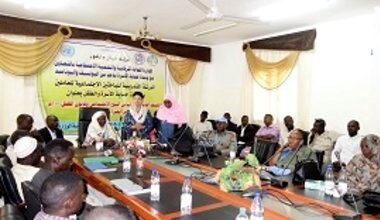
UN State Liaison Functions organize capacity building training workshop for Sudanese female police officers in North Darfur
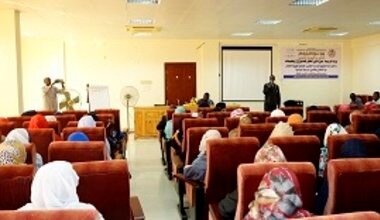
UN State Liaison Functions call for immediate review of land tenure policies during a Darfur Land Conference held in north Darfur
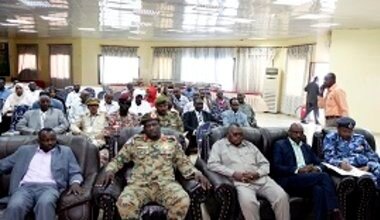
UN State Liaison Functions organize training on "Fair trial standards" for district court judges in South Darfur
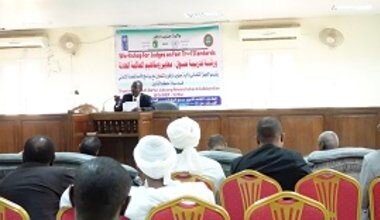
UN State Liaison Functions deliver training on human rights for rural courts judges and native administration in South Darfur
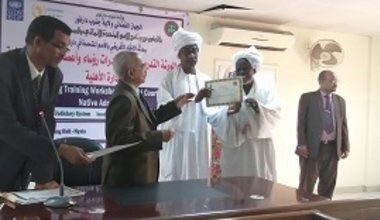
UN State Liaison Functions organize vocational skills training for at-risk youth in Tawila locality, North Darfur
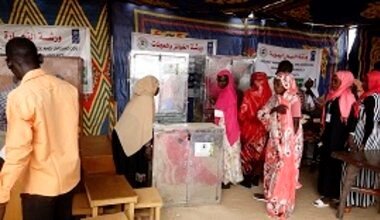
UN State Liaison Functions provide Human Rights training to Sudan Police in North Darfur
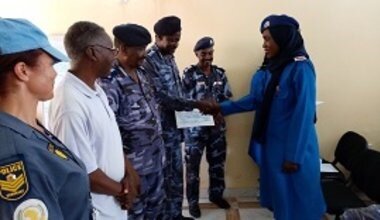
UN State Liaison Functions conduct workshop on justice delivery for victims of sexual and gender-based violence (SGBV) in West Darfur
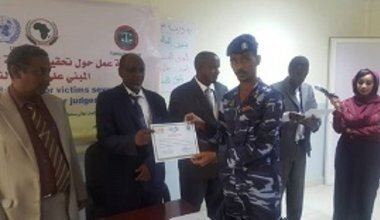
UN State Liaison Functions conduct training on human rights for GoS police in South Darfur
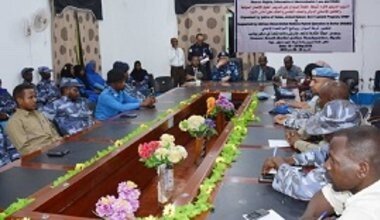
United Nations State Liaison Functions train Government of Sudan police officers in West Darfur
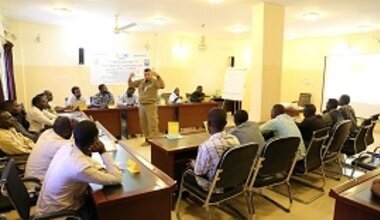
UN State Liaison Functions train district court judges in North Darfur
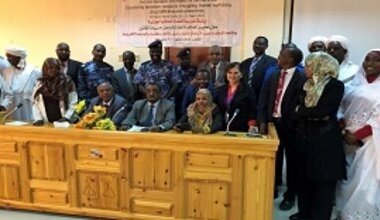
United Nations State Liaison Functions conclude training for Sudanese prisons officers in East Darfur
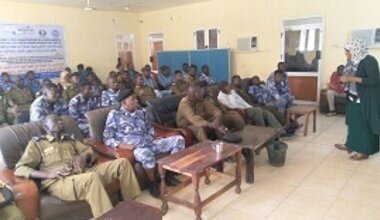
For more information, please contact the JTC at email address: unamid-joint-transition-cell@un.org or the Office of the Deputy Joint Special Representative (ODJSR).
 UN
UN United Nations Peacekeeping
United Nations Peacekeeping